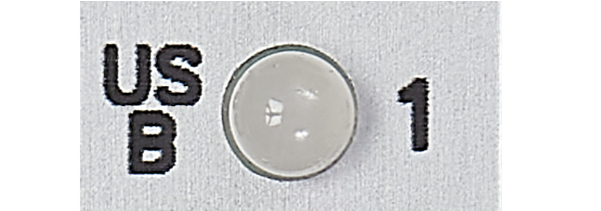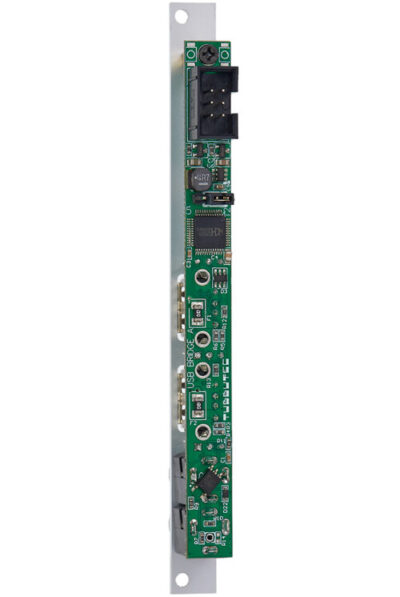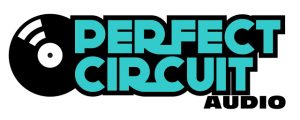Description
Routes and merges midi data between two USB devices and one TRS midi device.
USB Bridge A features two midi USB hosts and conventional TRS midi (type A) input and output.
Midi data is routed between the connected devices and merged if necessary. Routing is very fast with very low latency.
Data received from a USB device will be send to the other USB device and to the TRS output.
Data received on the TRS input will be sent to the two USB devices.
Depending on the kind of data it will be merged, see below.
You can use this to:
- Connect one or two midi USB midi controllers/keyboards to a conventional midi device
- Connect a keyboard to a module with only USB device capability
- Connect a cheap USB midi interface and get more conventional midi IOs
- Use your phone to control your Eurorack or as a synthesizer
- Connect a synthesizer via USB
This is a USB host only, meaning you can typically not connect it to a computer.
Need more TRS-inputs and outputs?
Need TRS type B instead of A?
TRS-Bridge has you covered. Simply connect it to USB Bridge and route signals according to your setup.
LEDs show the status of USB and midi:
- OFF: NO USB device connected:
- BLUE : USB device connected successfully
- MAGENTA : Receiving midi
- RED : USB device connected, but not compatible
- BLINKING RED : Overcurrent detected
The TRS midi LED is BLUE, when the module is turned on and blinks purple when receiving midi.
We use blue and red LEDs so colors are distinguishable for people with red/green color blindness. If you prefer your module with green/red instead of blue/red, please let us know when ordering.
Merging and routing
If all three midi inputs are used (2xUSB, 1x midi TRS), it is necessary to route and merge midi data.
Here, USB Bridge A differentiates between several types of midi data:
Note and controller data
These are all the midi messages that can be merged without any issues. If two devices send midi at the same time, data will be interleaved and sent to the receiving device.
Clock Data
Clock data can not be merged, only one midi clock stream can be used at a time. When USB bridge A receives clock data, it will lock the receiver to this clock source. Once you press stop, the receiver is freed and clock data can be received from an other device.
Sysex data
Sysex data is even trickier to handle than clock data, because sysex messages can have an arbitrary length. if multiple sysex streams are received simultaneously, USB bridge A buffers the data and will forward it to the receiver as soon as possible. This way sysex messages are merged as well.
Voltage converter
USB bridge A includes an optional DC/DC converter to convert 12V to 5V. This means eurorack cases without a 5V supply are also supported. A jumper on the back selects between 5V or 12V input. The DC/DC converter topology means current draw is less on the 12V supply. For example: If your USB device draws 500mA, USB bridge A will only draw about 220mA from 12V.
The supplied power cable features a 26 AWG conduction diameter and can carry more current than the typical eurorack cables. This allows you to connect midi devices with large current draw, such as charging two phones simultaneously. Your eurorack power supply should of course be able to handle the charging currents.
Compatibility
USB bridge A is compatible with all Class Compliant devices. It also supports some gear that is not quite Class compliant.
Rule of thump: If your device does not need a special driver in Windows, Linux or OSX, it will work.
So far it has been tested with the following gear, but of course it works with many more:
KEYBOARDS / CONTROLLER
- Korg Nanokontrol 2, Korg Nanokey 2
- Korg microKEY 37 MkII
- Roger Linn Design – Linnstrument
- AKAI Professional LPK 25
- Alesis Q49
- Novation Launchpad Mini MK2
- Thru-Music Axis-49
- 16n faderbank
SYNTHESIZERS / SEQUENCERS
- Korg SQ-1
- Novation Peak
- Teenage Engineering OP-1
- Teenage Engineering OP-1 Field
- Arturia Beatstep Pro
- Intellijel Metropolix (via USB Extender)
- FutureArtist Midi-Looper
USB MIDI INTERFACES
- Roland UM1-G
- Thomann Midi USB 1×1
- RME Fireface UFX
- Tubbutec µTune
USB Bridge does NOT work with the Haken Continuum Mini and possibly other Haken products.
Low latency
USB bridge A has an extremely low latency between input and output:
Sending note-on from USB to USB: 0.08ms
Sending 64bytes sysex from USB to USB: 0.12ms
Sending note-on from USB to TRS-midi: 0.03ms (until TRS midi transfer starts)
For comparison: Usually USB midi clocks at 1kHz / 1ms, so the minimum latency between two devices is usually 1ms.
USB bridge A is about 10 times faster.
A TRS/DIN midi note on message is about 1ms long. The latency here is about 33 times lower.
Technical specs
- Printed aluminum front panel, 2mm thickness
- 2x USB type A host socket
- 1x input, 1x output TRS midi type A
- Voltage supply 12V or 5V
- Includes 12 to 5V converter
- Supply current: +12V: 10mA , -12V: 0mA, (5V: 20mA) + current drawn by USB devices
- USB devices may draw up to 500mA current each
- Dimensions: 3HE, 2HP, 128.5mm x 10mm, Depth: 25mm
- Weight: 30g
Firmware Updates
In case we want to add features or fix bugs, USB bridge A has a firmware updater built in. Just put the update file on an USB flash drive, plug it into the lower USB port (USB2) and turn on power. USB bridge A will automatically update its firmware and restart.
The whole process only takes about 10 seconds.









